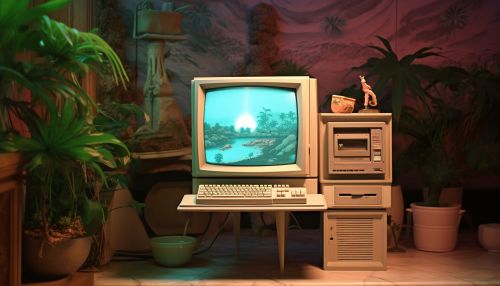Artificial Life
Overview
Artificial life (often abbreviated as ALife) is a field of study and an associated art form which examine systems related to life, its processes, and its evolution, through the use of simulations with computer models, robotics, and biochemistry. The discipline was named by Christopher G. Langton, an American computer scientist, in the late 1980s. Artificial life studies the logic and dynamics of living systems in artificial environments in order to gain a deeper understanding of the complex information processing that defines such systems.
History
The concept of artificial life has been around for centuries, but it wasn't until the 1980s that it began to take shape as a concrete field of study. The term "artificial life" was coined by Christopher Langton, who defined it as "life made by man rather than by nature". In the early days, the focus was primarily on simulating life forms on the computer, but as the field has evolved, it has expanded to include the physical instantiation of life in artificial media.


Theoretical Foundations
Artificial life is based on the assumption that life can be understood as a set of phenomena specific to the organization and processing of information, and not necessarily tied to its current carbon-based, DNA-guided form on Earth. This assumption allows researchers to abstract away from the specific details of molecules or cells, and focus on the more general patterns of behavior and organization that life exhibits.
The theoretical foundations of artificial life are derived from a variety of disciplines, including biology, computer science, mathematics, philosophy, and physics. Some of the key concepts in artificial life research include self-organization, emergence, and evolutionary computation.
Methods and Approaches
Artificial life research can be divided into three main approaches: soft, hard, and wet artificial life.
Soft artificial life is the study of artificial life systems on a computer, or "in silico". This includes simulations of biochemical processes, evolutionary algorithms, and cellular automata.
Hard artificial life, on the other hand, involves the creation of physical robots or other hardware that exhibit life-like behavior. This can include anything from simple Braitenberg vehicles to complex humanoid robots.
Finally, wet artificial life involves the manipulation of real biological materials in order to create life-like behavior. This could involve creating synthetic DNA sequences or engineering cells to perform specific tasks.
Applications
Artificial life has a wide range of applications, from scientific research to entertainment. In the scientific realm, artificial life can be used to model complex biological systems, to study the origins of life, and to explore the potential for life to exist in other forms or in other environments.
In the realm of entertainment, artificial life techniques have been used to create more realistic characters and environments in video games and movies. For example, the creatures in the game Spore were created using a form of artificial life.
Ethical and Philosophical Implications
The creation of artificial life raises a number of ethical and philosophical questions. For example, if we create a life form, do we have the same responsibilities towards it as we do towards natural life forms? If an artificial life form becomes sentient, does it have rights? These are complex questions that are still being debated by philosophers and ethicists.
See Also
- Artificial intelligence
- Biotechnology
- Complex systems
- Cybernetics
- Genetic algorithms
- Machine learning
- Robotics
- Synthetic biology
